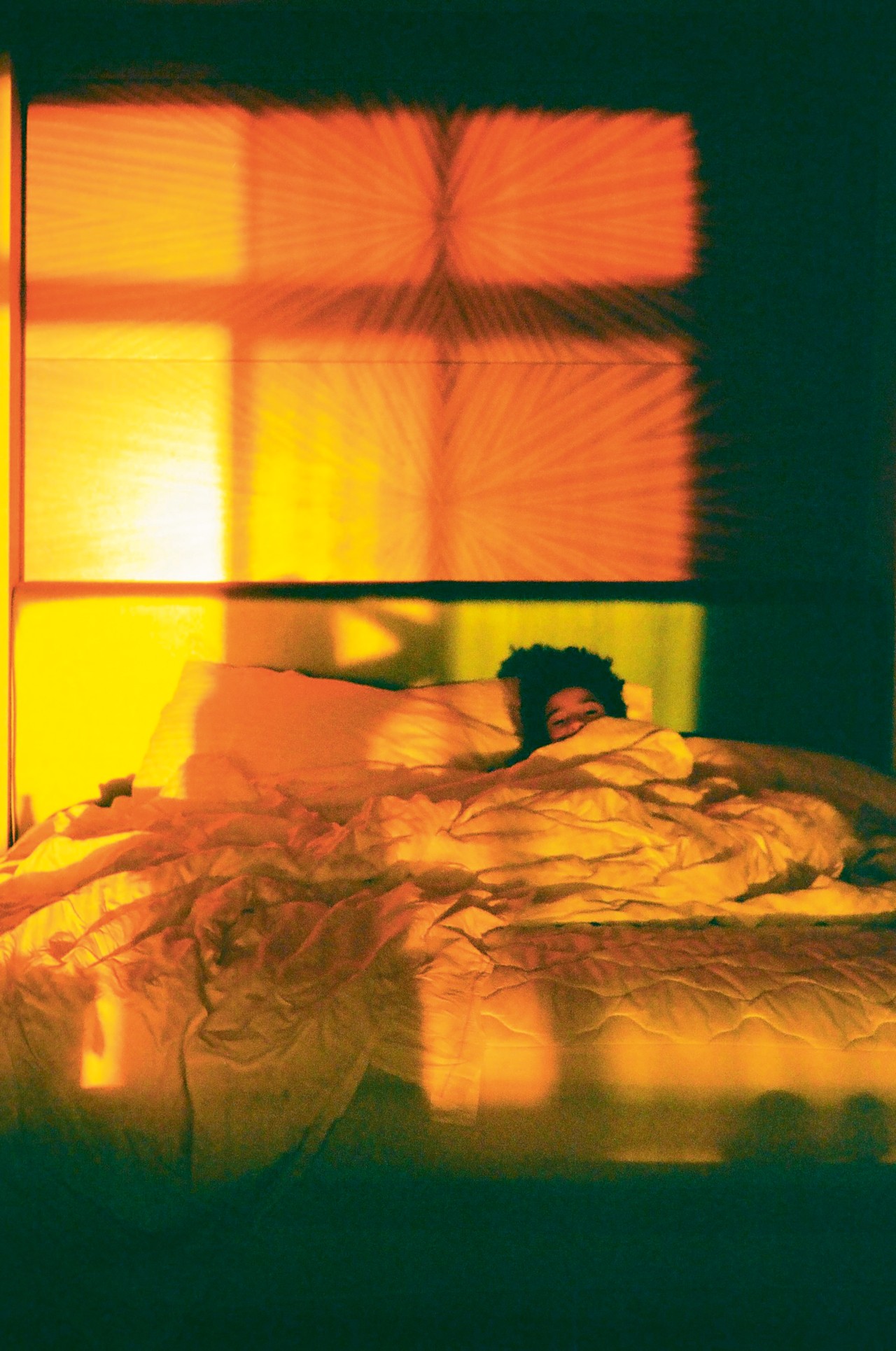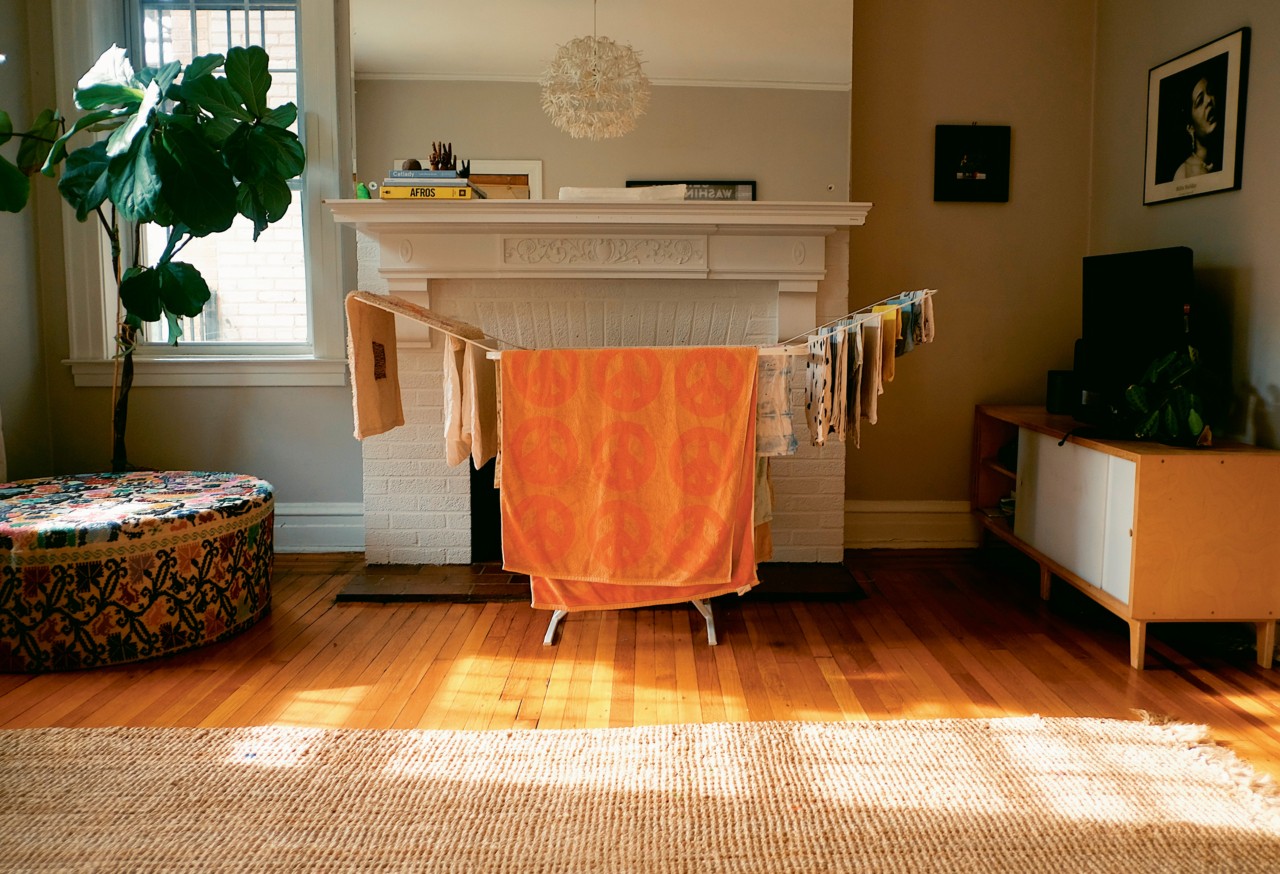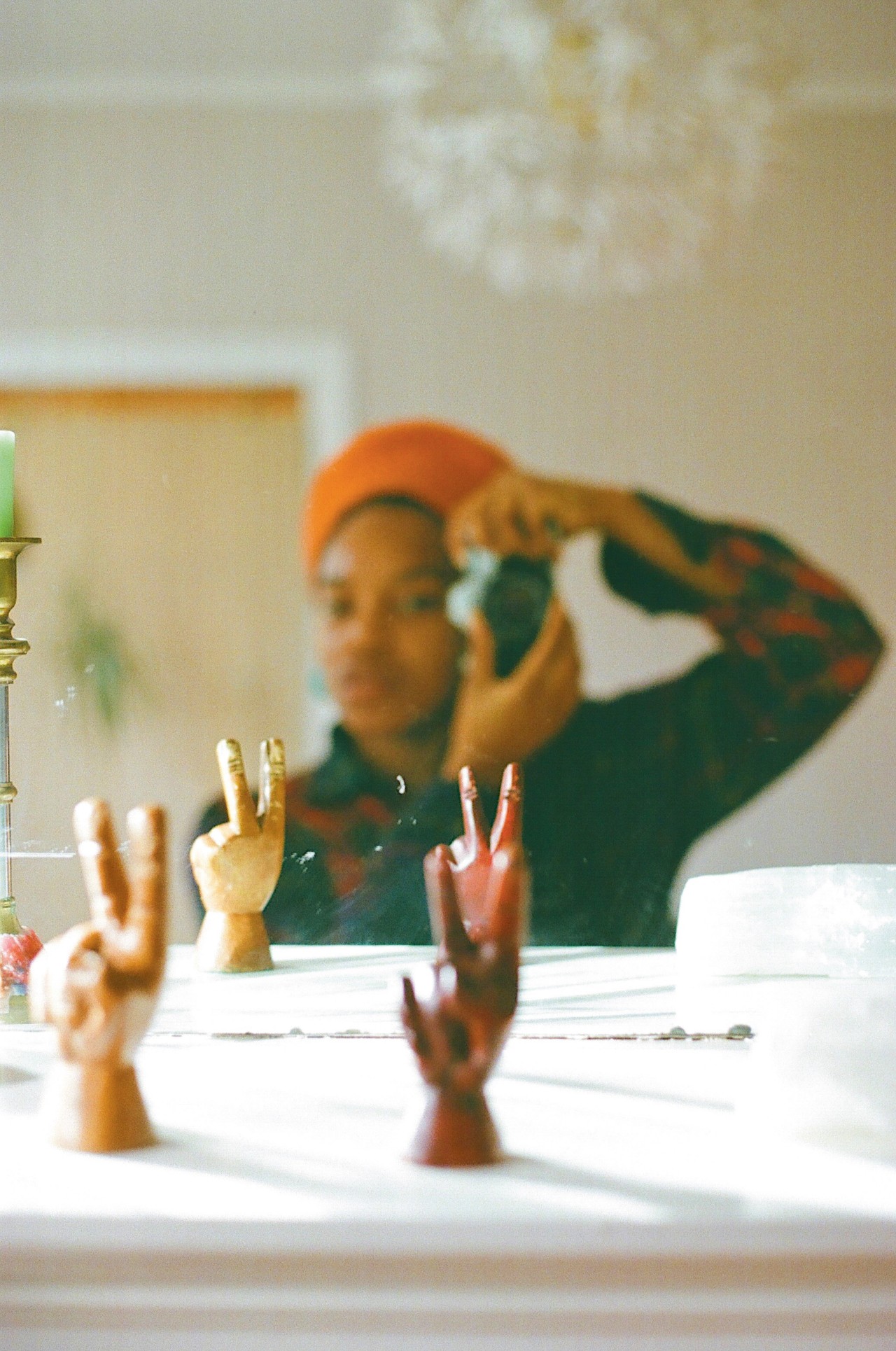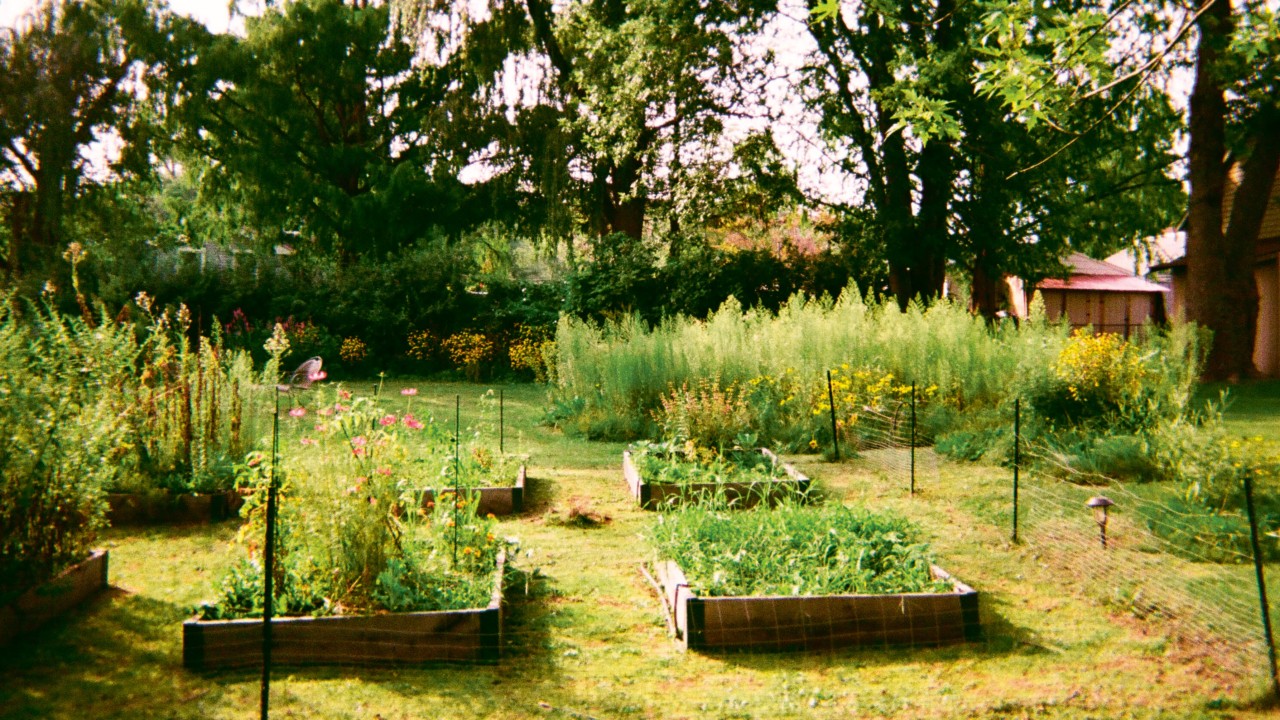
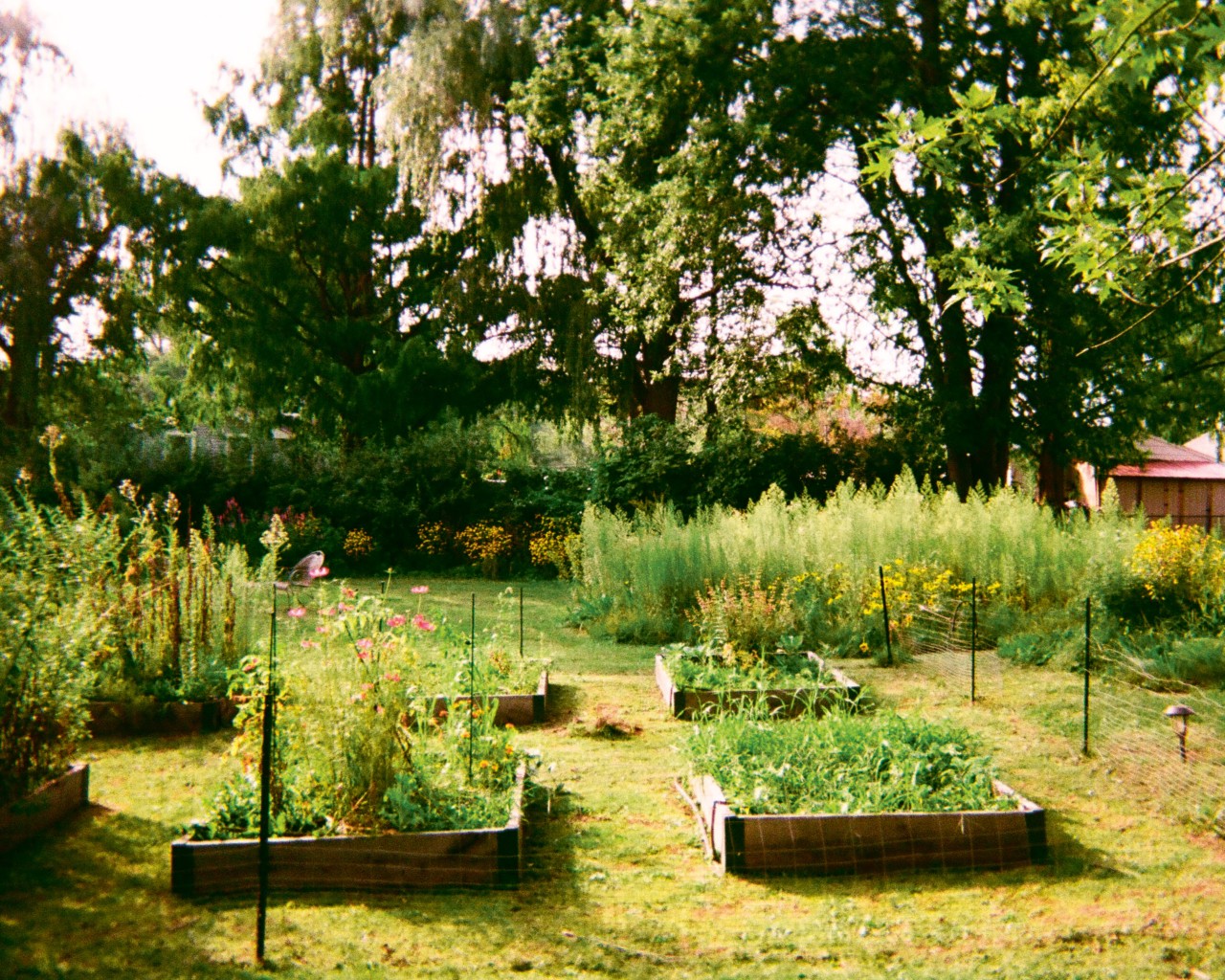
Words by Rachel Cargle
Photographs by LaTonya Yvette
In a world where we are navigating polycrises—a situation where multiple crises happen at once or in close succession, and where the crises’ effects worsen each other—it can be hard to imagine where to begin taking action toward justice. Multimedia storyteller, mother, and friend LaTonya Yvette suggests starting at home. Throughout the archive of her writing and most prominently in her new book, Stand In My Window, LaTonya reframes homemaking as an expression of rather than a response to crisis, offering fresh insights into the intersection of domestic life and social justice.
Stand In My Window is made up of 11 personal essays and 25 photographs that serve as a reminder of how homemaking can be an act of resistance to oppressive systems. Drawing from her personal history and family traditions, LaTonya positions the daily rituals of home—from floor-waxing to laundry-folding—as foundational practices that transcend the circumstances of the individuals. Central to her philosophy is the understanding that homemaking exists as both personal practice and collective offering; that how we build a home can shape our mind and our soul—and help heal our communities.
This idea finds physical expression in The Mae House, LaTonya’s Hudson Valley property, which is also a namesake of her late grandmother. By honoring the long tradition of mutual support within communities of color, The Mae House is activism in practice as a space that embodies her belief in land stewardship and collective care, and by offering rest and refuge to those in need.
LaTonya’s work reminds us that homemaking is an ongoing creative act that nurtures both individual and collective well-being. Below, LaTonya sits down with Atmos to discuss the radical act of framing domestic space as a site of continuous creation and how the art of making home can foster justice and healing in contemporary society.

Rachel Cargle
You say that homemaking is not a response to anything. Instead, it is something inherent to how we show up to life. I was going to ask how homemaking is a response to the polycrisis that Black, Indigenous and people of color are facing. To respect what you’ve said, I’ll instead ask you this instead: How has homemaking been a medicine in these times of desperation?
LaTonya Yvette
There you go, it’s medicinal. I’m trying to move away from resiliency as a badge of honor. I think we’re so used to Black people being in response to what whiteness has done or how it has harmed us.
I can give imagery on how this shows up for me: Sonya Massey was killed in her apartment in July [by two Sangamon County sheriff’s deputies who responded to Massey’s 911 call about a possible prowler at her home]. Four days later, I still went on and had the birthday party I had planned before the news of her murder. People danced in my living room and danced in my backyard. I saw people in my house, all different kinds of people, and I was blasting music, and I was dancing. Having people in my living room is not only something that I know how to do, it’s something we [Black women] know how to do: create a safe space. It was medicinal for me and for everybody else. It wasn’t about getting tougher or pushing against anything, it actually was just about coming together to heal one another.
When I started writing this book I was thinking that all we do is “in response.” As I ended the book I realized this is what we’ve always done. I don’t want people to get used to being resilient against these crises, right? I think that’s the refrain from saying “homemaking is a response.” I don’t want to normalize Black people, Indigenous people having to be resilient against these things.
“Having people in my living room is not only something that I know how to do, it’s something we [Black women] know how to do: create a safe space.”
Rachel
I’m intrigued by the way that you structured your book. The two parts are titled “Exhale” and “Inhale.” How did you come to decide that you wanted to tell the story of home through the framework of breath?
Yvette
In meditation, you inhale first and then you exhale. But in the book they’re reversed, you exhale and then you inhale. I think our breath is one of the most important things that we have. It’s the thing that we have control over to restart the day. As someone who’s suffered with anxiety throughout my life, it’s actually the most important component to reset; to feel safe. The book is a meditation in itself. The reverse of the exhale and the inhale is an invitation for the reader to dig in first—and then you can do the action.
In 2020 we were marching using the language “I can’t breathe,” right? Our breath speaks directly to health, to the environment, to climate, ultimately to justice.
Rachel
You saying that is making me think of home in the context of community care, offering each other our own justice.
Yvette
There you go.
Rachel
It’s interesting that homemaking is both deeply for ourselves and also for others who might come visit.
Yvette
Yes, we’re always holding space for other people. The birthday party that I mentioned earlier, that gathering, was part of the care. Not asking “are you okay enough to still make it,” but instead making the party itself the place where people can feel cared for.

Rachel
You know, you don’t make a home once. It’s daily practice. I think at some point we recognize that home is the headquarters for our shared love, our shared celebration. We must keep these things sacred.
Yvette
Yes, for sure. I also think by creating space for the ancestors in our home, we also are trying to move the spirit of these people, whether they’re here or not around us. That, too, is an act of community. That, too, is an act of care.
The book starts out with the story of my mom and her relationship with waxing the floors of whatever home we lived in. My dad was traditionally the person who waxed the floors, and my then mom became the one who would wax the floors after he left. We moved a lot, and she did it in every freaking apartment, even though she had a full time job. I didn’t understand. Mary Catherine Bateson has a quote where she suggests where we spend our money, where we spend our time—that’s all art-making. How do we make our homes? Like painting a canvas, you get to make something, and you get to change the shape of it, and you get to be like, “I like the way it feels when it’s like this, maybe tomorrow I’ll try something else.” Homemaking is part of that. We get to make art every day.
Rachel
We’ve been speaking in quite abstract and philosophical ways about home so far. I want to move into talking about the more tactical; about home being a curated expression of who we are. I’m interested to know what parts of your own home reveal about yourself these days? How can we remember ourselves through how we curate and care for our homes?
“Our home can stand as a reminder and a reflection of where we are in life.”
Yvette
I’ve been doing this thing where I am lighting candles all day long when I usually only light candles when I’m writing. I have been using it as a way to encourage myself toward the work—even in these times when I don’t necessarily feel like it. But lighting those candles is a subtle way to invite myself back to the page.
I’m also rearranging my furniture. I wasn’t sleeping right and I rearranged things back to the place it was when we first moved here. It was a literal recalibration, but it also offered myself a recalibration, a rearranging, a reorienting that I could feel in myself as I embarked on new chapters of life. Much like putting this book out into the world. Our home can stand as a reminder and a reflection of where we are in life.
Rachel
And how is The Mae House? You purchased the Hudson Valley home to be a refuge for you and your children, and in essence of care and community you have offered it as a space of rest as well. You’re quoted saying, “I felt connected to the premise that we are here on earth to be caregivers; that land doesn’t belong to us and we’re just timekeepers of it. I was also thinking about how Black people and people of color have always taken care of each other and allowed each other space to rest.” I’m interested in hearing how The Mae House is both your art and your activism?
Yvette
I always say it’s my living art. I borrow that language from Linda Good Bryant who says that her gardens were her living art. [The Mae House] is definitely my living art project, but it’s also my charge. It’s my activism, right? It has given me a solid place to show up not only for my own friends and family, but also for the community of people who pour into the House and its services and of course those who benefit from it—most pointedly Black women and other people of color. For example, there’s someone coming who has lost their job and requested a discounted rate. It moves me to think that she’s trusting the house to take care of her—and I am trusting it, too.

Editor’s Note: This interview has been condensed and edited for purposes of length and clarity.
LaTonya Yvette and Rachel Cargle on Reclaiming Rituals of Home
